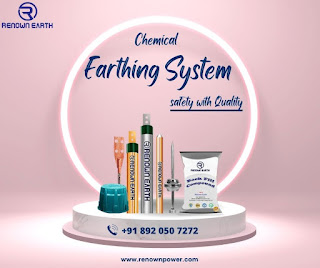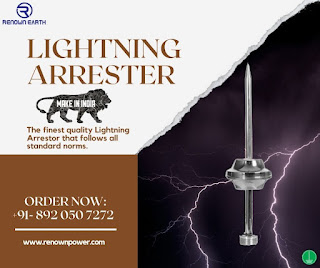Debunking the misconceptions of Chemical Earthing.
Earthing is the process of grounding or earthing electrical systems on the earth. An earthing framework describes the electrical potential of connections to the earth's conductive surface.
Chemical earthing rod is quite
popular all over the world. They are well-known for their durability,
dependability, and effectiveness. These items are created with great-quality raw
materials to suit the demands and desires of clients.
Any
electrical device that lacks adequate earthing can fail, causing a danger to
life if it gets in contact with fault currents.
The
maximum short circuit current of any electrical circuit is defined by the
capacity of the transformer and the kind of load, which can vary in thousands
of amperes.
A 1000kVA
transformer's short circuit capability is roughly 21kA in current ratings.
However, just a few amperes of electricity are needed to kill a person. Thus,
permanent earthing is required for the safe discharge of fault current.
Dissipate
large electrical surges and fault currents efficiently, both in amplitude and
duration, to safeguard equipment and save downtime. Personnel working nearby
are shielded from severe electric shock caused by touch potential or step
potential.
1. Chemical Earth is maintenance-free and Ever-lasting. : - One of the major criteria for an effective
chemical electrode is corrosion resistance. It will decide the effective life
of the complete earthing system. It is very difficult to detect faulty earth
electrodes since they are installed deep down.
Galvanized steel pipes
have a lower lifespan than copper-clad steel pipes. According to the findings
of the research, a 254-micron copper coating can endure for more than 30 years, but
a 100-micron zinc coating can only be appropriate for a structure with a
service life of fewer than ten years.
As a result, Copper Bonded Electrodes are more
cost-effective and give a durable and sound choice to Galvanized Steel found in
Chemical Filled Electrodes.
2. Chemical
Electrodes are less difficult to set up than Copper Bonded Rods. :- Pipe
Electrodes are driven by their design, therefore installation involves drilling
the soil to an adequate depth, generally more than 3 meters, before putting the
electrode and then filling it back up. This process is time-intensive and would
ensure the use of specialized and costly equipment.
Renown Earth Copper Bonded Rods
may be hammered or driven swiftly into the soil using a power hammer due to the
strength of the steel core and depending on on-site circumstances.
As a result,
installation may be done quickly and efficiently without the need for a lot of
specialized equipment.
3. Chemical Filled Electrodes have been
rigorously tested under international earthing standards. : - There
are no such international standards that specifically address the quality
requirements for Chemical Filled Electrodes.
According to UL 467, a
Standard for the Safety of Grounding and Bonding Equipment, the composition of
these substances could be 40% Calcium Chloride and 60% Sodium Chloride.
Renowned earth Copper Bonded Earthing Rods are
subjected to 25 kilos Ampere short circuit testing, electrical resistivity
tests, climactic aging tests, corrosion, other chemical, physical, and
electrical tests.
As a result, all
Renowned Copper Bonded Ground Rods meet the highest international requirements.
4. Chemical Filled Electrodes are saturated
with moisture-absorbing chemicals that increase the effectiveness of the
earthing system. : - Earth Enhancement Compound is suggested for an
earthing system when the verified ground resistance is more than 3000-ohm
meter, according to IEC 62305, an international standard for Lightning
Protection System Design.
According to Indian
Standard 3043, this degree of resistance is often seen in arid or rocky
terrain.
As a result, soil augmentation
claimed by Chemical Filled Electrodes is only necessary for extreme
circumstances.




Comments
Post a Comment